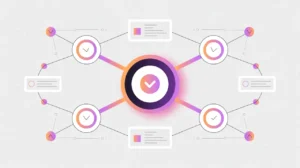Importance of Machine Learning (ML)
Machine Learning (ML) is one of the most influential subfields of Artificial Intelligence, and it matters now because it is the engine behind many of the applications shaping daily life and social change. From predictive text to medical image analysis, ML powers systems that adapt and improve as they process more data.
In the context of social innovation and international development, ML is a catalyst for transforming how problems are diagnosed, interventions are designed, and resources are allocated. Its ability to uncover hidden patterns, forecast trends, and automate decision-making has far-reaching implications for communities navigating scarcity and diversity. ML’s prominence in global discussions reflects a broader question: how do we design technologies that learn from the past without replicating its inequities? Understanding ML is crucial for mission-driven organizations seeking to harness technology responsibly for inclusive, sustainable impact.
Definition and Key Features
Machine Learning is the branch of Artificial Intelligence concerned with creating systems that learn from data rather than relying solely on explicit programming. The concept traces back to early pioneers like Arthur Samuel, who in 1959 described ML as giving “computers the ability to learn without being explicitly programmed.”
Unlike traditional software, where rules are written by humans, ML systems infer rules from examples. They may use algorithms that classify, cluster, or predict outcomes based on input data. ML is not synonymous with AI itself. It is a subset, though often mistakenly used interchangeably. Nor is it simply “big data”; while data fuels ML, what distinguishes it is the adaptive learning process. ML models can be simple (linear regression) or complex (deep neural networks), but all aim to generalize from past observations to make predictions about new information.
How this Works in Practice
ML works by training algorithms on datasets so they can recognize relationships between inputs and outputs. In supervised learning, the system is trained on labeled examples (such as photos tagged “cat” or “dog”), learning to predict labels for new cases. In unsupervised learning, the system explores unlabeled data to detect patterns or groupings. Reinforcement learning takes another approach, where an agent interacts with an environment and learns from feedback (rewards or penalties) to improve performance.
Common ML techniques include regression, decision trees, support vector machines, and neural networks. The effectiveness of an ML model depends on data quality, feature selection, and evaluation metrics that measure accuracy, precision, recall, or fairness. Training ML models often requires significant computational power, but once deployed, they can process large volumes of information rapidly. At its core, ML is about approximation: it builds models that capture statistical patterns well enough to be useful, though rarely perfect. This approximation makes human oversight critical, especially in socially sensitive contexts.
Implications for Social Innovators
Machine Learning plays a direct, practical role in advancing social innovation and international development by turning raw data into actionable insights. Development programs generate enormous amounts of information, including surveys, health records, satellite imagery, and transaction data, that often exceed human capacity to analyze.
ML bridges that gap by detecting correlations, predicting outcomes, and recommending interventions in real time. For instance, ML models can forecast which households are at greatest risk of food insecurity, enabling more targeted relief. They can analyze SMS feedback from beneficiaries to surface concerns quickly, or flag anomalies in financial data to prevent fraud in aid distribution. ML is also being used in natural language processing to translate local dialects, improving communication between institutions and communities. The challenge lies in ensuring that models trained on global datasets remain relevant to local contexts, where cultural nuance, infrastructure limitations, and data sparsity may distort predictions.
Mission-driven organizations need to build capacity not only to use ML outputs but also to interrogate how those outputs were generated. By doing so, ML becomes a tool that strengthens accountability and precision in program design and delivery, rather than a black box that risks perpetuating inequity.







